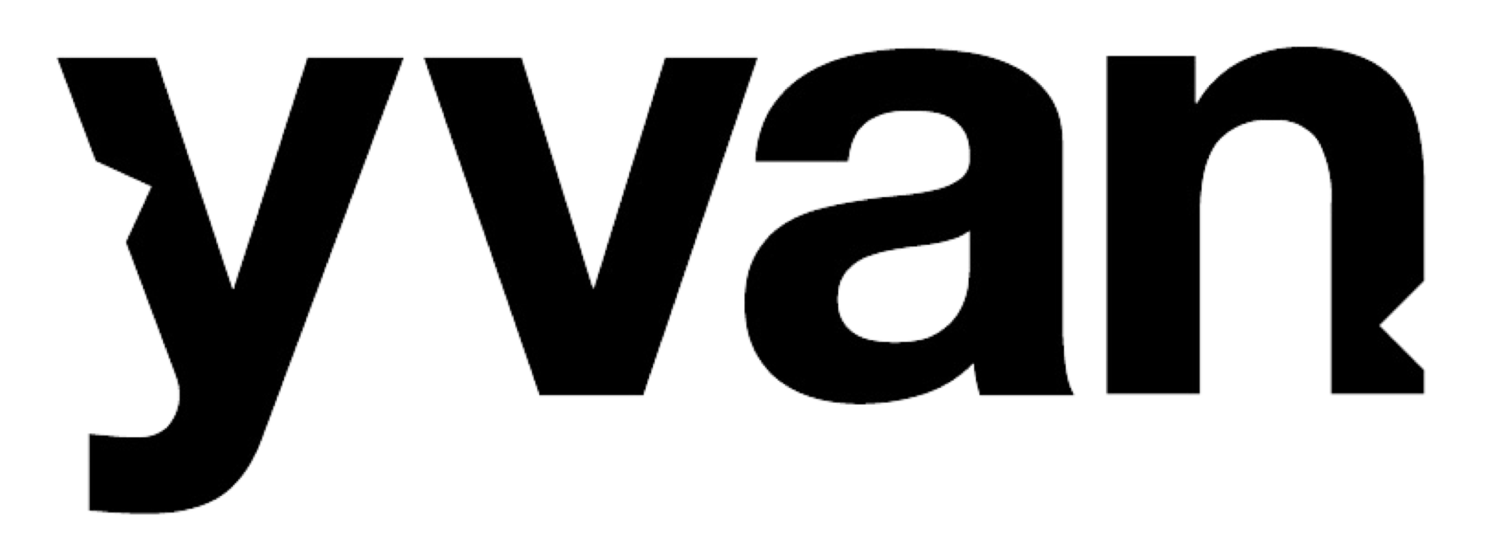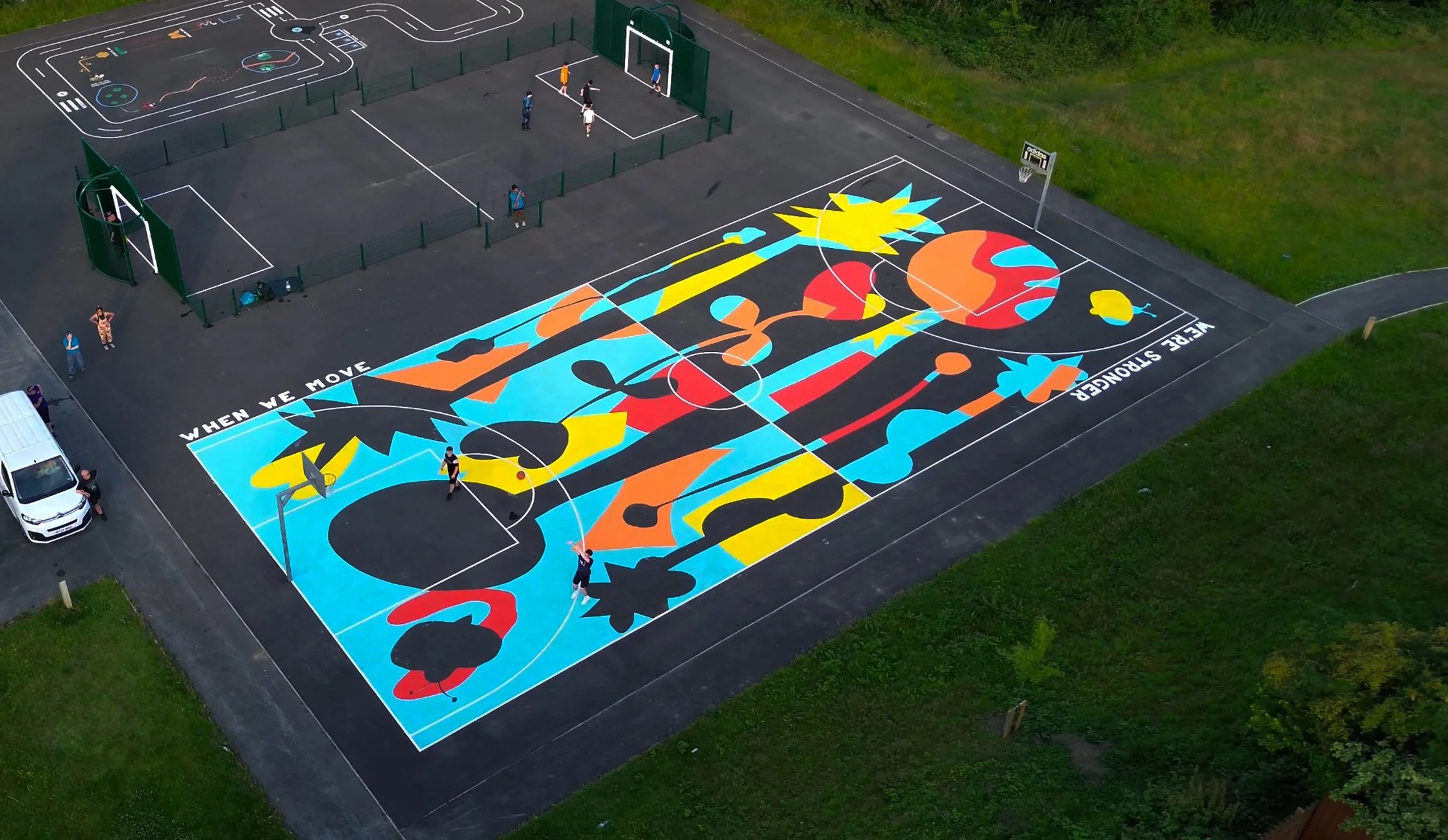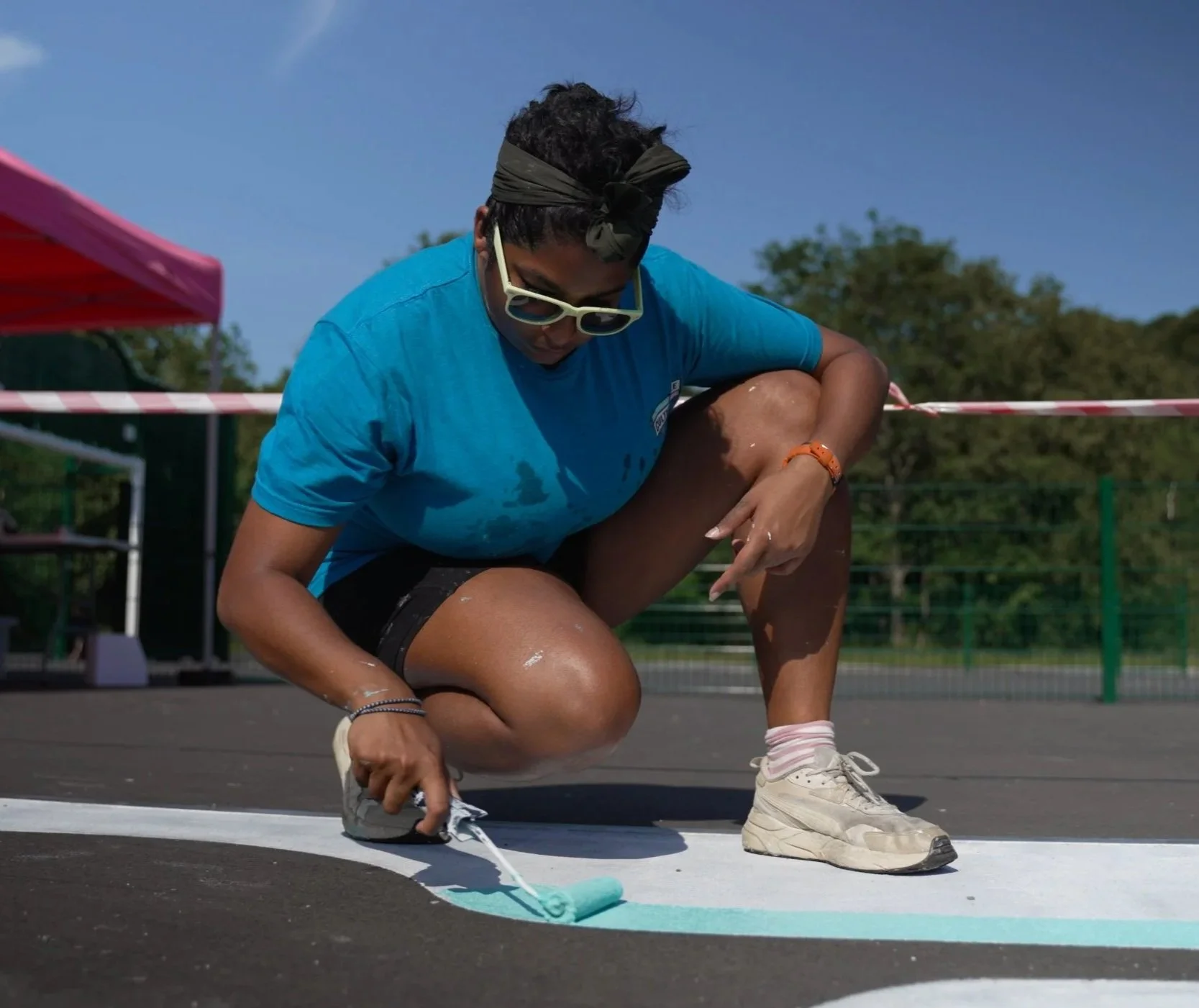Natasha Joseph (We Belong Here)
Introducing Natasha Joseph - a visual artist and curator specialising in murals, public art, and participatory projects.
Their practice blends storytelling, collaboration, and cross-disciplinary approaches, and through We Belong Here CIC they champion inclusive, community-focused creative opportunities across Yorkshire.
In this interview with Natasha, they share more about their experience and aspirations, including the origins of We Belong Here, changes they'd like to see in the arts world and a new project in Halifax - a 65m stone installation celebrating the South Asian migrant contribution to the textile industry and, alongside fellow artist Ekaterina Sheath, creating the first South Asian dedicated archive in Halifax housed by Calderdale Industrial Museum.
“Through colour and storytelling, I offer playful interventions in public spaces, transforming them and reviving a sense of shared agency, making that place feel like ours again.”
Can you tell us a bit about your practice as a visual artist?
As a visual artist, I explore how personal and cultural stories can be told through objects, memories, and local spaces. My practice is deeply reflective and grounded in collaboration and community, shaped by a desire to create work where people feel genuinely seen and where their histories are honoured. I’m drawn to the ways environments leave marks on us and how we, in turn leave marks behind. Through colour and storytelling, I offer playful interventions in public spaces, transforming them and reviving a sense of shared agency, making that place feel like ours again.
Photo credit: Travelling Spoon (2025)
Could you tell us about We Belong Here and how it came about?
We Belong Here began as an event back in 2019, when I was still at university. I wanted to create a space where creatives from both performing and visual art forms could share their practice dynamically and on equal footing. What started as a one-off gathering quickly grew into a wider idea: that both community art spaces and creative opportunities could be more accessible and representative.
I believe art does not need to be confined to a gallery. It can exist as a living archive embedded in community-owned spaces, shaped by the people who use them. It can be an industry that looks and feels a little more like artists like me. We Belong Here is a call to action- a way of imagining and building spaces where creativity is shared and where everyone has a seat at the table.
Why do you create?
'Yake illa?’
This is a very Bangalore way of saying ‘why not?’ in Kannada. Creativity isn’t separate from my life, it flows through the everyday. It’s having ideas, noticing problems and instinctively imagining solutions, composing a one-minute film from a passing moment on the bus, or looking at a blank wall and seeing a mural already living there. To me, it’s as intuitive and part of daily life as breathing.
Photo credit: SWISH mural (Drone)When I was 3 I was diagnosed with ADHD and rather than put me on medication (which was what was recommended) my mum sat with me day after day as I filled one sketch book after another. Maybe I have trained myself to ‘create’ in order to process the world around me but it’s also the thing I love most. The thing I could never imagine not doing because it’s when I have the most fun. When it stops being fun, I’ll stop doing it.
“Many artists struggle quietly, fearing that speaking openly might make them seem “unprofessional” or cause them to miss opportunities. The system of funding, extensive call-outs, and unpaid pitching worsens this. I believe that if artists shared their experiences more honestly, we would see how many feel the same and could work together to create real change. ”
Do you consider yourself to be part of an artist network/community, and if so, how does this impact you and your practice?
When I first came to England nearly ten years ago, I dreamed of being part of a creative community. At my first We Belong Here event, I remember looking up at the art projections and down at an audience of 100 creatives, and I truly felt like I had finally created a community space that I was part of.
Photo credit: (2025) Humari Aawaz Exhibition, Piece HallAs a global majority, queer, and disabled artist, my personal frustrations have shaped my desire to change how our creative communities operate. My practice and my business focus on creating accessible, equal opportunities for artists who are often underrepresented. To date, I’ve created 115 paid opportunities for artists to make new work or contribute creatively to projects with me.
For me, being part of a community means supporting others and making the space better for everyone, not just myself.
What changes would you like to see in the wider arts sector?
The goal of a more equal and accessible creative community is something I have touched on but on a much more fundamental level-I’d love to see a more open and supportive creative community across the arts sector. At present, over-productivity, burnout, and posturing are rife. Many artists struggle quietly, fearing that speaking openly might make them seem “unprofessional” or cause them to miss opportunities. The system of funding, extensive call-outs, and unpaid pitching worsens this. I believe that if artists shared their experiences more honestly, we would see how many feel the same and could work together to create real change. At the very least, we would feel stronger together, fostering a more collaborative, supportive, and sustainable creative community.
“As a global majority, queer, and disabled artist, my personal frustrations have shaped my desire to change how our creative communities operate. My practice and my business focus on creating accessible, equal opportunities for artists who are often underrepresented.”
What are your future aspirations as a visual artist?
My future aspiration is to spend more time making for the sake of making rather than making for a project, a deadline or ‘work’. I think it’s really hard to have a distinction between your job, your hobby and your passion when they are all basically the same thing. I find myself more and more working toward an outcome and less and less creating to make mistakes, test things out and play. I want to tap back into that process of play for myself and fill the well. Often when working on such large scales in public and community facing projects, the emotional and mental drain is quite immense. So I would love to slow down and take the time to make just for the sake of making!
Photo credit: Swish (Natasha Joseph)
And have you got anything coming up you’d like to share?
For the last two years I have been collaborating with Ekaterina Sheath, an amazing illustrator and fellow mural artist to realise a 65m stone installation in Halifax City Centre celebrating the South Asian migrant experiences and contribution to the textile industry. Our concept is based around oral histories and archival material, however when we first started the project we were shocked to realise that there was no archive containing any documentation of the South Asian community. What little we found was mostly unnamed photographs of South Asian workers in the background. 2 years on, immense sleuthing, 10+ oral history recordings, a dedicated South Asian steering group, 2 exhibitions at the Piece Hall and Calderdale Industrial Museum and a 24 minute documentary film later we have started the first South Asian dedicated archive in Halifax housed by Calderdale Industrial Museum. Whilst this is just the beginning, I am excited to share that at last, our stone installation is also on its way and is all set to be installed later next spring!
Links:
webelonghere.co.uk | @webelonghereuk
natashatjoseph.com | @shenanigansofnat





